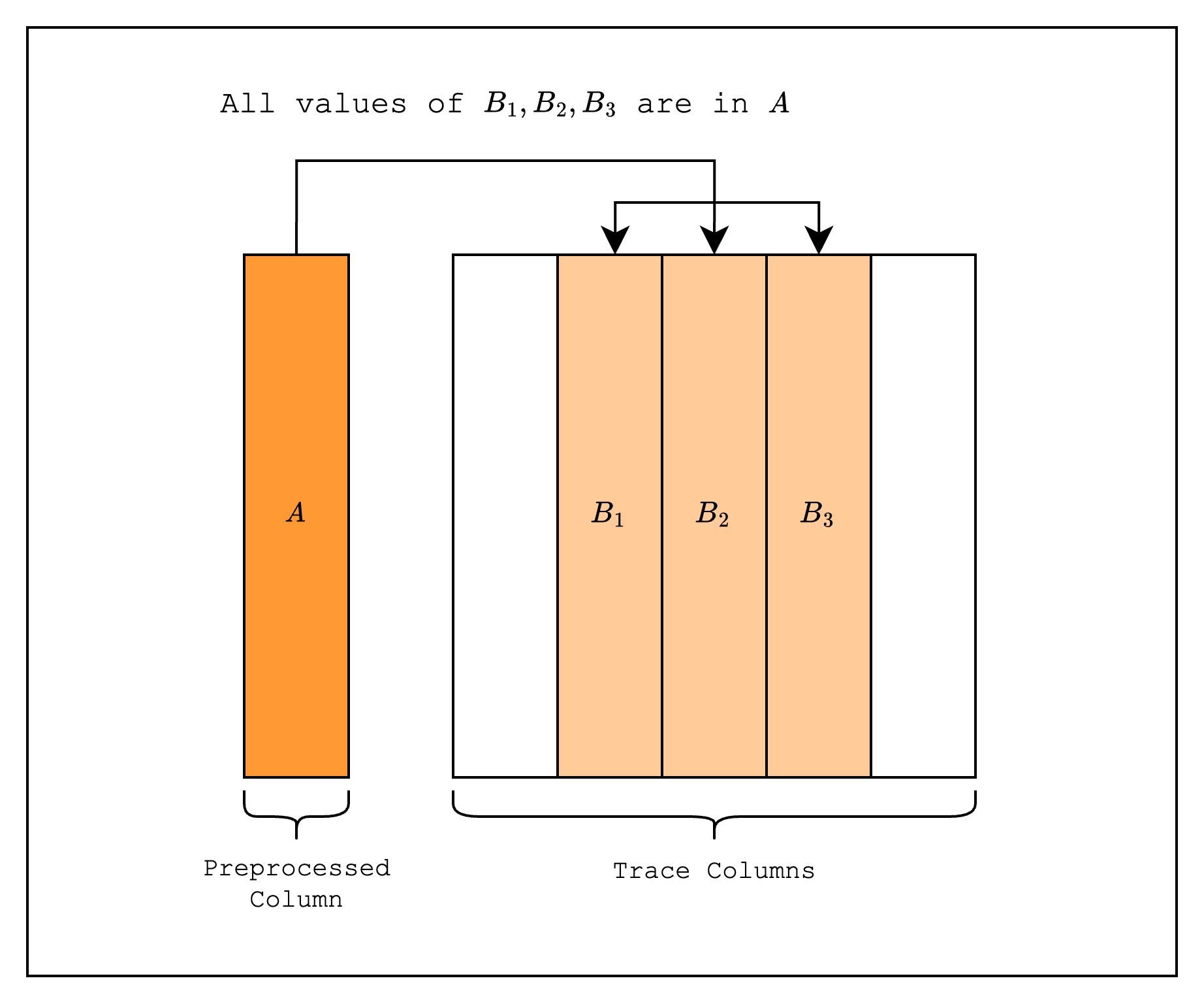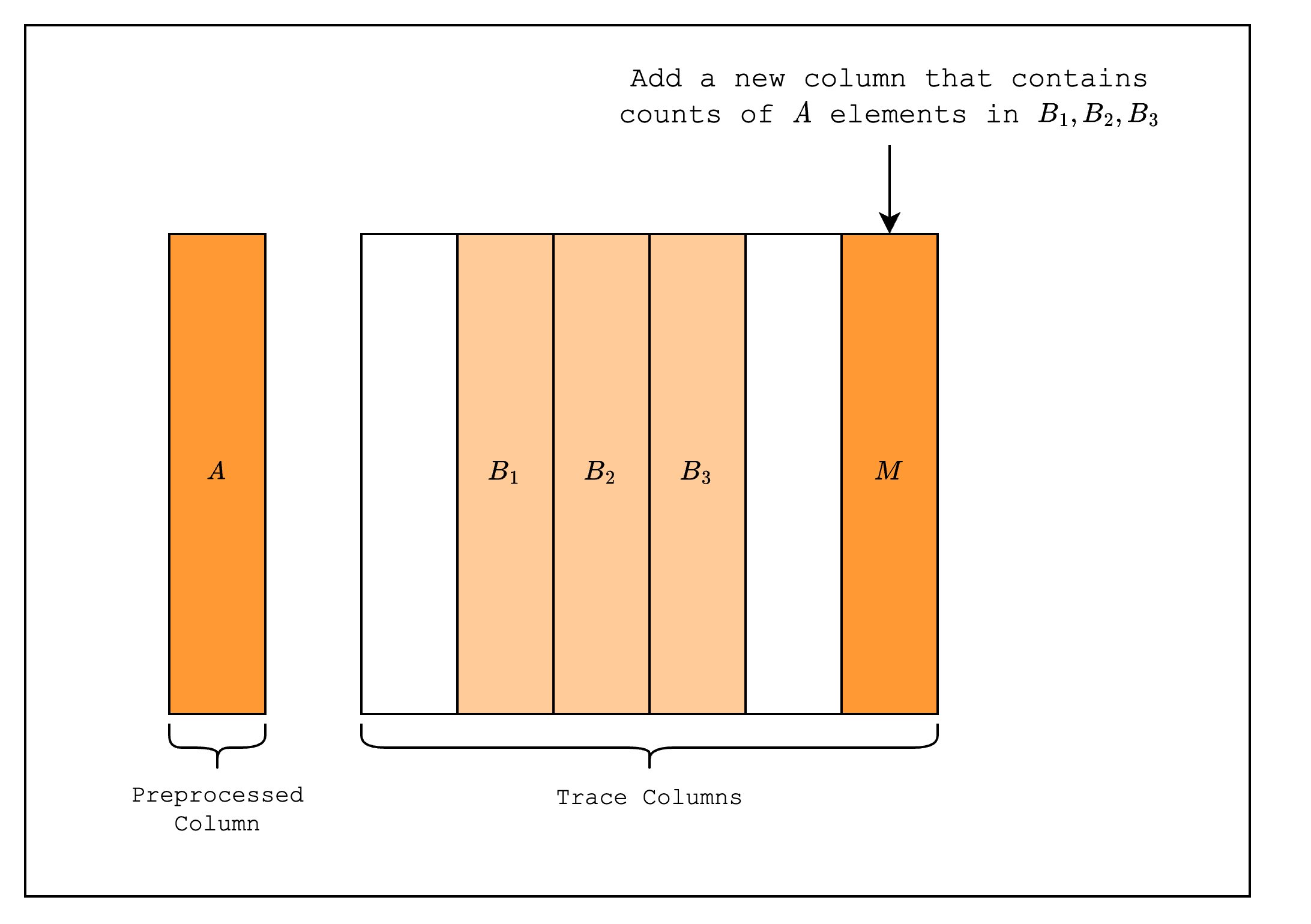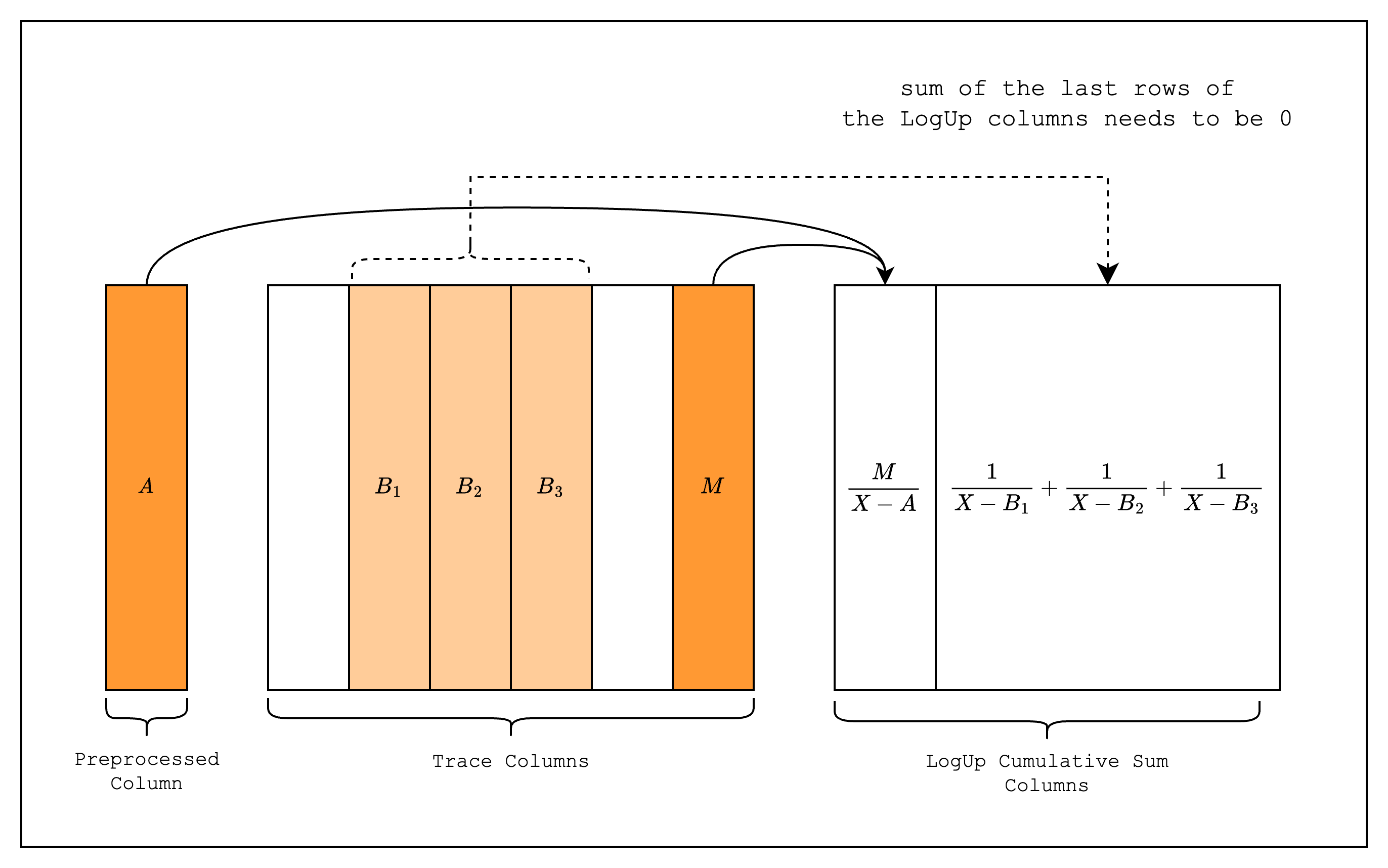Design
We will walk through four steps to incrementally build up the design of lookups.Step 1: Suppose we want to have two columns with the same values.
We can do this by creating two columns with the exact same values and adding a constraint over them:col_1 - col_2 = 0.
Step 2: We want to check that the two columns have the same values but in a different order.
We can use the idea that two sets of values will have the same cumulative product if they are indeed permutations of each other. So we add new columns,col_1_cumprod for col_1 and col_2_cumprod for col_2, which contain the running cumulative product of col_1 and col_2, respectively.
The new constraints will check that each of these new columns do indeed contain the cumulative product values and that their last values are the same.
We can optimize this by creating just one new column that keeps a running cumulative product of the fraction col_1 / col_2.
Step 3: We want to check that all values in col_2 are in col_1, but each value appears an arbitrary number of times.
(Note that this is a generalization of the second step in that for the second step,all values in col_2 appear exactly once in col_1)
Supporting this third step is actually pretty simple: when creating the running cumulative product, we need to raise each value in col_1 to its multiplicity, or the number of times it appears in col_2.
The rest of the constraints do not need to be changed.
Step 4: We want to check that all values in [col_2, col_3, ...] are in col_1 with arbitrary multiplicities
Finally, we want to create many more columns that contain values from col_1.
To support this, we can use the same idea as the third step: when creating the running cumulative product, we need to raise each value in col_1 to the power of the number of times it appears in [col_2, col_3, ...].
In summary, lookups support the following use-cases:
- Prove equality: we want to prove that the values of the first column are equal to the values of the second column.
- Prove permutation: we want to prove that the values of the first column are a permutation of the values of the second column.
- Prove permutation with multiplicities: we want to prove that each value of the first column appears a certain number of times over multiple columns.
Technique: LogUp
LogUp is a technique used to constrain lookups. It’s a successor to Plookup, and is especially useful for proving permutation with multiplicities. Here, we’ll briefly explain why this is the case. Plookup and its variants use a technique called the Grand Product Check to prove permutation. In the equation above, we can check that the set is a permutation of the set by setting to a random value provided by the verifier. However, this becomes inefficient when we have multiplicities since we need to encode the multiplicities as powers of each lookup polynomial, and thus the degree of the polynomial increases linearly with the number of multiplicities. On the other hand, LogUp uses the derivative of the Grand Product Check: In this approach, each lookup polynomial is represented as a rational function with the multiplicity as the numerator. This transformation is significant because the degree of the polynomial remains constant regardless of the number of multiplicities, making LogUp more efficient for handling multiple lookups of the same value.Implementation
The following figures show the implementation of lookups in S-two that looks up values from a preprocessed trace and constraining them using the LogUp technique.
Figure 1: Create trace columns that look up values from a preprocessed trace

Figure 2: Add a multiplicity column

Figure 3: Create LogUp columns